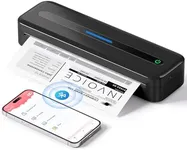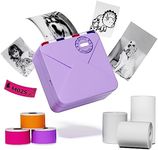Buying Guide for the Best Pocket Mini Photo Printers
Pocket mini photo printers are a great way to print photos on the go, allowing you to capture and share memories instantly. When choosing a pocket mini photo printer, it's important to consider several key specifications to ensure you get the best fit for your needs. These specs will help you understand the printer's capabilities and how well it will perform in different situations.Print QualityPrint quality refers to the resolution and clarity of the printed photos. This is important because higher print quality will result in sharper and more detailed images. Print quality is usually measured in dots per inch (DPI). Printers with higher DPI (e.g., 300 DPI or more) produce better quality prints, while those with lower DPI (e.g., 200 DPI or less) may produce less detailed images. If you want high-quality prints for keepsakes or gifts, opt for a higher DPI. For casual use, a lower DPI may suffice.
Print SizePrint size refers to the dimensions of the photos that the printer can produce. This is important because it determines the size of the printed images. Common print sizes for pocket mini photo printers include 2x3 inches and 3x4 inches. Smaller print sizes are more portable and easier to share, while larger print sizes offer more detail and are better for framing. Consider how you plan to use the prints—if you want to carry them in your wallet or share them easily, smaller sizes are ideal. If you want to display them, larger sizes may be better.
ConnectivityConnectivity refers to how the printer connects to your devices, such as smartphones or tablets. This is important because it affects the ease of use and compatibility with your devices. Common connectivity options include Bluetooth, Wi-Fi, and USB. Bluetooth and Wi-Fi allow for wireless printing, which is convenient and easy to use. USB connections may offer faster data transfer but require a physical connection. If you prefer wireless convenience, look for printers with Bluetooth or Wi-Fi. If you need faster and more reliable connections, USB might be the better choice.
Battery LifeBattery life refers to how long the printer can operate on a single charge. This is important because it affects how portable and convenient the printer is for on-the-go use. Battery life is usually measured in the number of prints per charge or hours of operation. Longer battery life means you can print more photos before needing to recharge. If you plan to use the printer frequently while traveling or at events, look for models with longer battery life. For occasional use, shorter battery life may be sufficient.
Print SpeedPrint speed refers to how quickly the printer can produce a photo. This is important because faster print speeds can save time, especially when printing multiple photos. Print speed is usually measured in seconds per print. Faster print speeds (e.g., 30 seconds or less) are ideal for quick and efficient printing, while slower speeds (e.g., 60 seconds or more) may be less convenient. If you need to print photos quickly, look for models with faster print speeds. For casual use, slower speeds may be acceptable.
Paper TypePaper type refers to the kind of paper the printer uses to produce photos. This is important because different paper types can affect the quality and durability of the prints. Common paper types include ZINK (zero ink) and traditional photo paper. ZINK paper is convenient because it doesn't require ink cartridges and is smudge-proof and water-resistant. Traditional photo paper may offer higher quality prints but requires ink. If you want hassle-free printing with durable photos, ZINK paper is a good choice. If you prioritize print quality, traditional photo paper may be better.
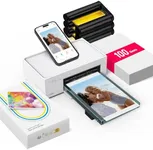


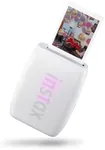
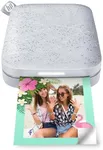

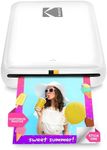

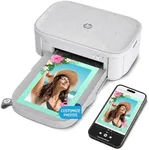

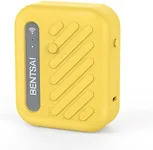

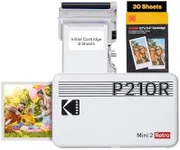
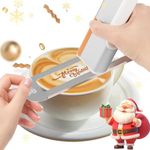
![Phomemo Portable Printers Wireless for Travel, [Upgrade] P831 Inkless Thermal Transfer Portable Printer Support 8.5'' x 11'' US Letter Regular Copy Paper, Compatible with Phone & Laptop, 300DPI](https://images-proxy.bestreviews.guide/USltyGAn3YbpxNhBfaDaUy5TiF0=/0x150/https://m.media-amazon.com/images/I/41gp6LFW1zL._AC_CX679_.jpg)
